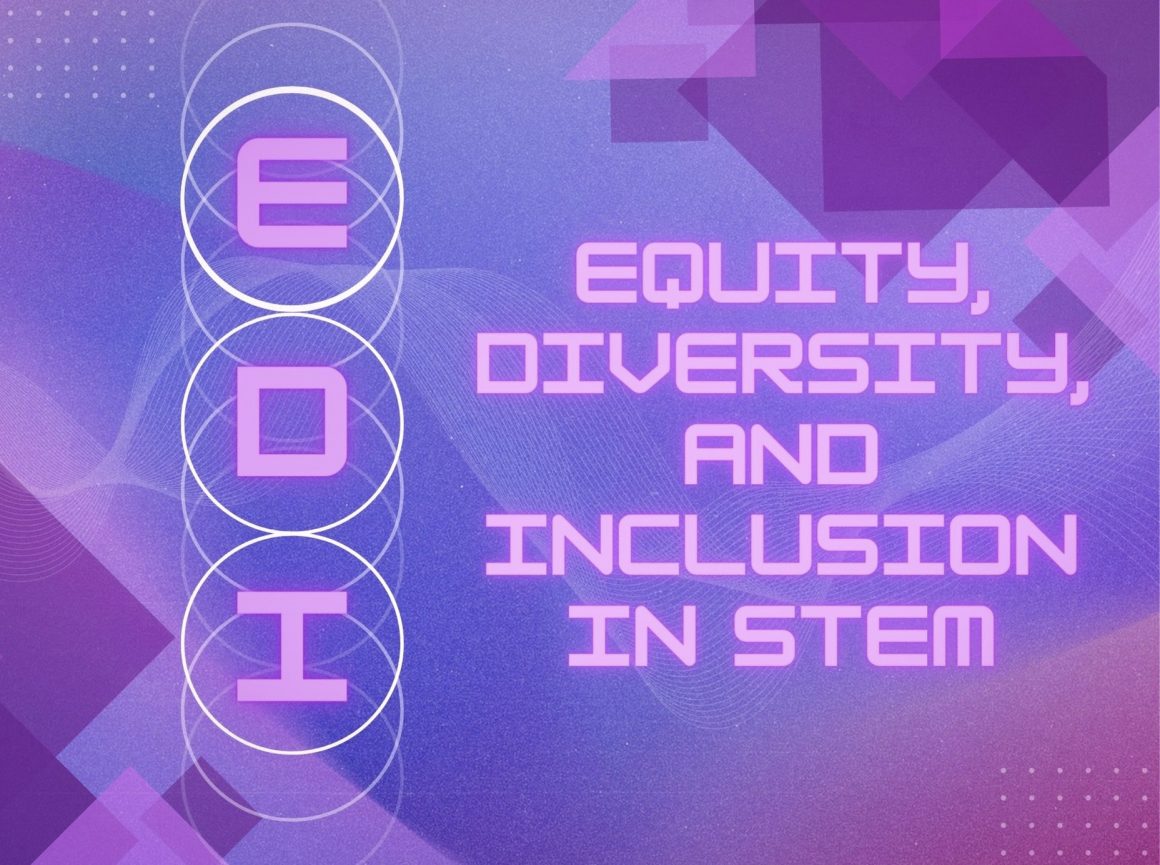
Exploring Equity, Diversity, and Inclusion in STEM
By Kshef Kamran, June 15 2023—
Equity, diversity and inclusion (EDI) involve removing obstacles to sustainable living for equity-seeking, including but not limited to women, Indigenous people, visible/racialized minorities, people with disabilities and LGBTQ2S+ people. Many studies show that the following groups were historically excluded and marginalized: Black people/African Americans, Latinx, Native Hawaiians, other Pacific Islanders and people with disabilities. These groups and more are heavily underrepresented in the workforce and various areas of academia.
Diversity refers to the differences between groups and it is a set of attributes that identify each individual with their unique qualities such as race, ethnicity, nationality, gender identity, and sexual orientation. When discussing the significance of diversity, it is often suggested that innovation and creative methods of problem-solving can be a result of including a variety of opinions. Although true, constant emphasis on this idea treats individuals as more of a business model than people. From a moral standpoint, diversity is important to maintain a just system. It is crucial that equal access to opportunities is provided independent of identity. It is also important to recognize talent without bias and provide others with opportunities to pursue their goals and aspirations.
Great feats have been achieved in establishing EDI in academia through the inclusion of historically marginalized groups in bachelors and doctoral degree programs. With the support and persistence of undergraduate students at the University of California’s Berkeley Biology Scholars program and at Louisiana State University, hierarchical mentoring programs all came to fruition. It is these hard-won successes that should be celebrated.
Despite the hard work of those in the U.S. who are mending the gap between EDI, academia and society, underrepresentation exists at various levels and fields of academia in areas such as science, technology, engineering, and math (STEM). However, just as undergraduate students led to various achievements in other universities, it is possible to bring these changes throughout North America so long as there are dedicated students willing to be the voice for those that do not have one. There are many ways to mend the disconnect between diverse groups, society and academia — some EDI examples of how are listed below.
- Leaders Matter
It is vital to understand that representation in leadership and in careers that build future generations, such as doctors and teachers, does matter. Having a teacher that represents Black, Indigenous, or people of colour (BIPOC) provides youth with hope that they too can aspire to succeed and achieve their dreams and attain a career that makes them proud. The lack of representation at senior-level positions can lead to people in academia questioning if it is a practical career for aspiring minority students. Seeing representation in leadership positions can lead to the path of success for many other minorities.
- Address implicit biases
It is very difficult to be unbiased. Whether conscious or unconscious, to some degree everyone harbours biases. To mitigate bias towards individuals, some institutions and programs have implemented an education curriculum that focuses on overcoming biases. An overcoming bias curriculum is a great teaching tool for any age group, not only university or graduate students but for elementary, middle and high school students who could significantly benefit from this program. In the adolescent age range where youth are still learning, it would be a great opportunity for them to understand the impact of discrimination before they are sent on the journey to their career paths.
- Promote an equitable training environment
Within medical schools in the US, the specialization of pathology is struggling with enriching the training program and the field as a whole with EDI. There has been a growing lack of interest in the pathology field and the number of medical students pursuing the path of pathology is steadily decreasing. Along with this lag in interest, there has been a decline in the representation of minority groups within the field as well. Methods of mitigating the lack of diversity could be to provide more exposure to medical students regarding the lack of representation and pathology as both areas can garner interest during clinical rotations, and to provide more information to those in medical schools or in pre-med. Any field that is challenged with less diversity such as pathology can be improved by providing more in-depth and hands-on experiences in order to enrich the aspiring students and encourage them to pursue that field. It is crucial that the opportunities that are provided to students are done so based on merit and independent of identity.
- Using a holistic application review process
An effective way to increase diversity in various opportunities is by integrating a holistic application review process. The Association of American Medical Colleges (AAMC) defines a holistic review as a process that bases candidate admissions and selection upon a broader range of elements such as experiences, characteristics, and academic merit. This is an effective method of leading to inclusivity in the medical field, and it would be beneficial to extend this strategy to other fields and career paths in order to better provide individuals of minority groups a way of achieving their goals. By attributing a more holistic application process more individuals from minority groups throughout society will be able to pursue career paths of their interest.
In order to instill EDI in minority groups in STEM fields, as well as in society, much work has been done. However in order to improve the process of attaining a career or the conditions of working in the field for minorities, there are various other strategies that can be implemented. The above list shows some examples. Providing a holistic approach to the workforce and academia inclusivity will provide the youth of today who will be the adults of tomorrow with the opportunity to aspire and achieve their goals.
